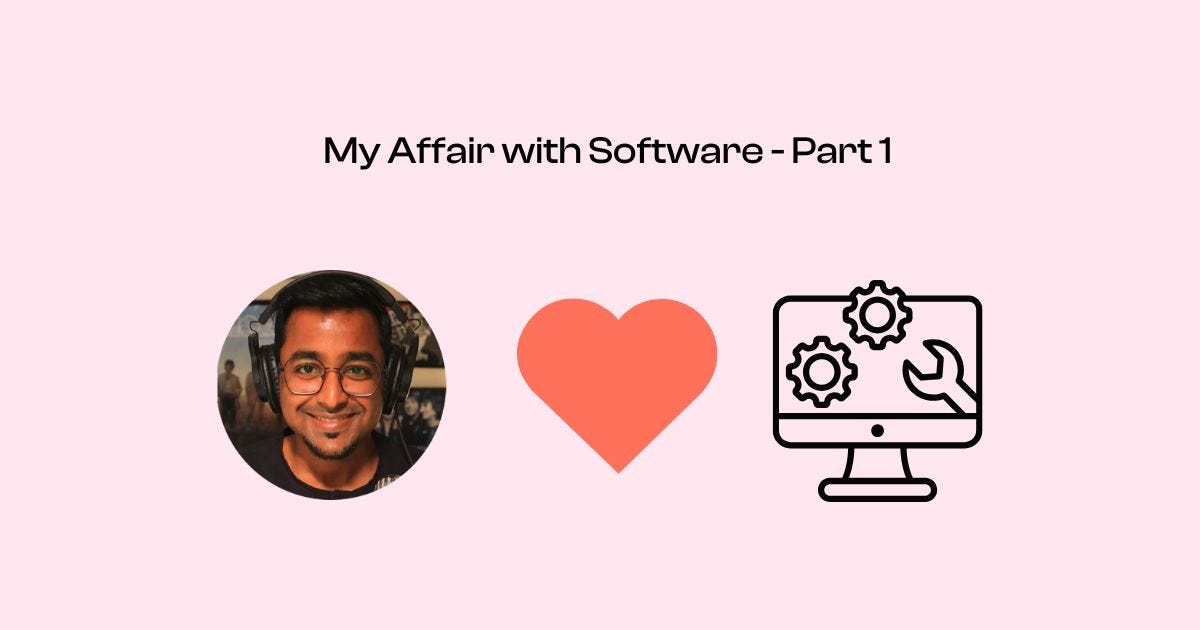👋 Hi friend,
If you haven’t already, I recommend reading the 2025 Manifesto – a short read that provides context around where databeats and I are headed.
This 4-part essay twill help you understand my background and why I’m so determined to make a dent in the software industry. This is also the first time I’m sharing this story with the world and I’d be very happy to go deeper into anything you’d like me to.
My fascination with software dates back to the year 2009. My brother had started his company a couple years before and thanks to him, I got a front-row seat to the process of building and distributing software in the heydays of the mobile revolution.
Also, in 2008, my cousin got a couple of iPhones from the US and because he loved me, he let me have one for about a week. I have such distinct memories of playing with the first iPhone alongside my friends and needless to say, we were all enamored with what we experienced.
So, when I realized college is a complete waste of time, I would spend my days thinking about utility apps. Glued was a network for poets and writers. ANDriot (Art and Design riot) was an interior design app. eDU was the online home for students of Delhi University. Of course, none of this existed beyond my fertile imagination. I’d create powerpoints and present them to my brother for feedback, only to be told that I need to think about monetization first.
I’ve often regretted not having the conviction to bring one of my many ideas to life. But that’s life, and it’s okay; this obsession of mine led me down a path that got me where I am today – and I have no qualms about admitting that I’m in a pretty good place.
Because I couldn’t stop thinking about app ideas, moreso after Android went mainstream, I would spend a ridiculous amount of time reading TechCrunch, testing new apps, and becoming an early adopter of every app that I could get my hands on. (Fun fact: I was one of the earliest users of Product Hunt which, as you can imagine, sent me deeper down the rabbit hole I was already in).
Those days, I worked for my brother’s company which afforded me the opportunity to pitch complex enterprise solutions to some of the biggest brands in India. However, truth be told, I would spend most of my time drawing elaborate wireframes for the latest app idea I was obsessing over. I went the farthest with RideNow, a carpooling app. I hired my roommate to design the UI and found a co-founder online who built a prototype. That’s as far as I went before pivoting to LetsHead, a collaborative travel app that only went as far as the wireframes on my massive whiteboard.
It wasn’t easy but I came to terms with the fact that I lacked the resources and the drive to launch a consumer app. I was also rather lazy and preferred working as little as I needed to. And I must admit that I don’t regret it one bit – those were the best years of my life. One of the things I’d spend a lot of time on those days was cooking and experimenting with food.
In 2014, when foodtech was blowing up in India, I thought I must get involved. Long story short, I found myself at an early-stage food startup where I helped build their web app and also ran their sales and marketing, only to realize that I never wanted to work in the food industry again. I then started a tech-enabled coworking business that provided the software and the hardware for anyone to monetize unused space. However, it led to a business model where we also helped set up and manage the shared spaces – a complete nightmare.
However, both of these experiences helped me understand what really drove me and gave me the conviction to go all-in on B2B software. It was December of 2017 when I made my first $300 building a chatbot (on the Facebook Messenger platform) for a chiropractor who had found me through the Chatfuel community on Facebook.
After building a chatbot for my coworking startup, I started experimenting with Chatfuel (the best tool back then to build Messenger chatbots) and became a power user. Soon, I learned that I absolutely loved helping others learn how to use the tool and would spend my days answering questions in their community. Doing so would lead to many more clients which, in turn, made me a full-time chatbot builder and an automation enthusiast; every chatbot had to be integrated with a CRM and Zapier was the default – until Integromat showed up on the scene and changed everything.
I wasn’t the only one who found Integromat too good to be true – there was a whole bunch of us who became raving fans and power users of Integromat in no time. The kind of things it enabled us to do without code was truly magical and opened up an array of new opportunities. I’m not exaggerating when I say that discovering Integromat was a life-changing experience – for me and for many others; I’ve got many stories in my repertoire, some of which are truly awe-inspiring.
Another outcome of diving head-first into the world of integration and automation was a deep understanding of the SaaS ecosystem. The ability to read API docs is a superpower that enables one to quickly grasp a product’s true capabilities, the data it makes available, and most importantly, its underlying data model. Integromat enabled folks like me to take that ability to the next level by offering visual tools to pull data from and push data to any freaking API on the internet; some serious money was also made in the process.
No sooner than I became a power user of Integromat that I found what was holding the company back from explosive growth. And I knew I could help – I could feel it in my bones. Another long story short, after a failed attempt to work with the company, I pitched to create educational material for Integromat and after a successful trial project, found myself doing exactly that. I also built the user community from scratch; it’s hard to express in words the level of excitement, fun, and fulfillment it led to.
This was early 2018 and B2B software was exploding with innovation – it was a great time to be in SaaS! Fast forward 7 years, and even though we’re now in the Age of AI Agents, it’s still a great time to be in SaaS – after all, an agent is nothing but a piece of software.
More on that next week.
Awesome Links
You’re missing out if you haven’t played around with Integromat which is now Make.com (affiliate link)
Even though Zapier has been called a toy compared to Make, I love that Zapier has built several complementary products, the latest being Agents.
I’d love to see what you build with either of these.
Show me what you’re building, ask a question, or send me a podcast invitation – I respond to every message on LinkedIn! 😎






Cool to hear what got you to where you are now. Excited to see where it takes you next!